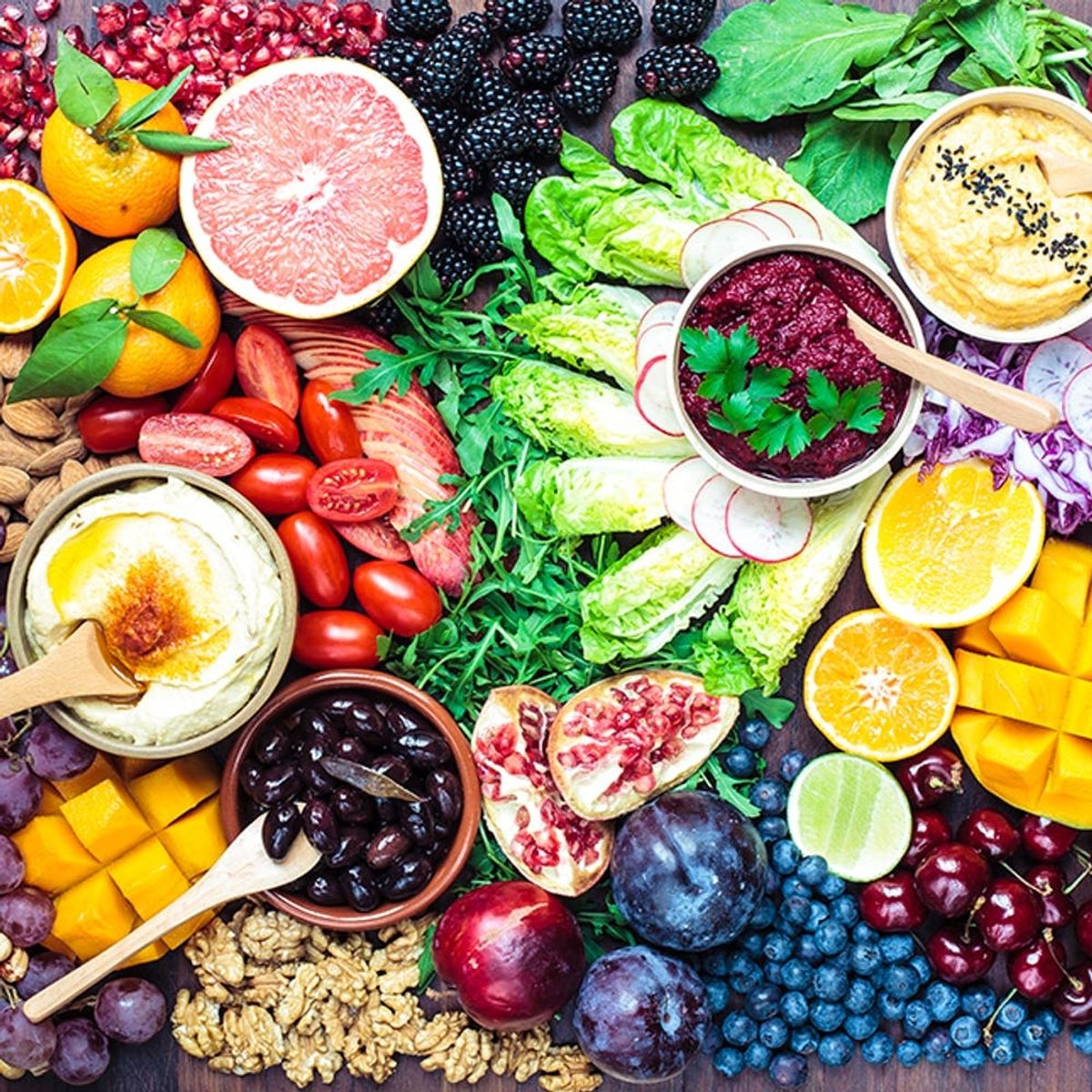A little color psychology just might help us eat healthier.
The Color of Your Surroundings Can Affect How Much You Eat

It’s no secret we’re huge fans of color. It’s an aspect of sensory experience that enhances our lives and taps into our emotions in countless ways; a blue sky defines our image of the perfect summer day, and we get a sense of warmth and coziness from the vibrant orange of a crackling fire. We identify ourselves by the colors we choose for our clothing, our vehicles, and our home decor. I’m a cool winter babe with my turquoise eyeliner; you’re a royal purple goddess in your eggplant dress. You might never have given it much thought, but research has shown that a relationship also exists between color and your experience of food.

For years, the Food and Brand Lab at Cornell University has conducted dozens of experiments around this concept of food and color, proving that when it comes to how much, how fast, and how healthily we eat, color matters. When the hue of a food contrasts with the plate it’s served on, for example, the visual difference heightens our perception of the amount of food. Therefore, we eat less of it. Fast food restaurants have long capitalized on the concept of the food-color connection, says researcher Brian Wansink in his book Mindless Eating ($17). “They decorate for speed eating: bright lights … and a high-arousal yellow-and-red color scheme.” Food scientists have even pinpointed consumer beliefs about colors on food packaging. Foods presented in red packages give an impression of sweetness, while green or blue packaging implies health.
If all of this color science applies to the environment surrounding our food, what about the food itself? Is it possible to take the natural associations our brains make about color and use them to help us adhere to the healthy diet adage “eat the rainbow?” For good reason, this phrase has gained popularity among nutrition professionals. There’s no question that consumers need motivation to include more fruits and vegetables in our diet. Despite our best intentions, only one in 10 Americans takes in the recommended 1.5-2 cups of fruit and 2-3 cups of vegetables per day.
Dietitians attest that positive mental and emotional connections to healthy foods go a long way toward motivating us to eat more of them. Registered Dietitian Maya Nahra, founder of The Habit and Behavior Change Health Coaching Program, says, “Our emotions can be influenced by color and external environment. Surrounding ourselves with purposeful external factors that influence emotion will most certainly influence behaviors. Why not try this with the food environment?”
Sounds great! So where do we start applying this principle? Not everyone is due for a kitchen remodel, but if adding more color to your cooking or dining space is an option for you, feel free to break out the paint (or other colorful decorative items)! Consider what colors make you feel happy, upbeat, or content. Time and again, research has shown the connection between mood and food. It’s a merry-go-round of positivity: Happy people generally make healthier diet choices, which then fuel those good vibes even more. Likewise, try hanging images of colorful, healthy foods on the walls of your kitchen or dining area. They may provide the color association appeal your brain needs to prompt you to reach for fruits and vegetables.
Taking some time to consider your own thoughts and feelings about each individual color of the rainbow is another jumping-off point for making healthier choices more appetizing. (Plus, it’s a fun exploration of personal preferences!) Traditional cultural associations of various qualities with different hues may play a role in our perceptions (red for love, or green for growth, for example), but there’s also plenty of room for personal interpretation. Start by writing a list of red, orange, yellow, green, blue, and purple. Alternatively, print a color wheel off the internet or pick one up at your local art supply store. What positive qualities do you associate with each color? Do you find orange energizing, yellow joyful, purple intriguing? Write these attributes down.
Once you’ve identified your positive associations, try keeping your list in a visible place. If you practice meditation, include your associations in a guided color meditation from time to time. Soon, these connections may take root for positive change in your diet. The flat brown of a candy bar may begin to look awfully boring next to the vibrant red of cherries or apples. And the thought of green as the color of life could draw your palate to a spinach salad instead of a burger at lunch. The more you build these positive perceptions, the easier reaching for the rainbow of fruits and vegetables becomes.
What do you think about color association and food? Tweet us @BritandCo!
Brit + Co may at times use affiliate links to promote products sold by others, but always offers genuine editorial recommendations.
(Photo via Getty)



































